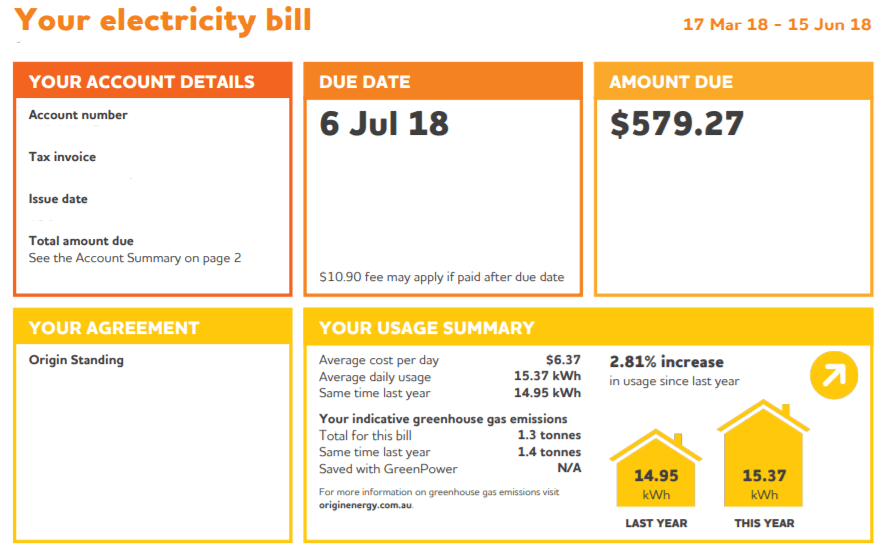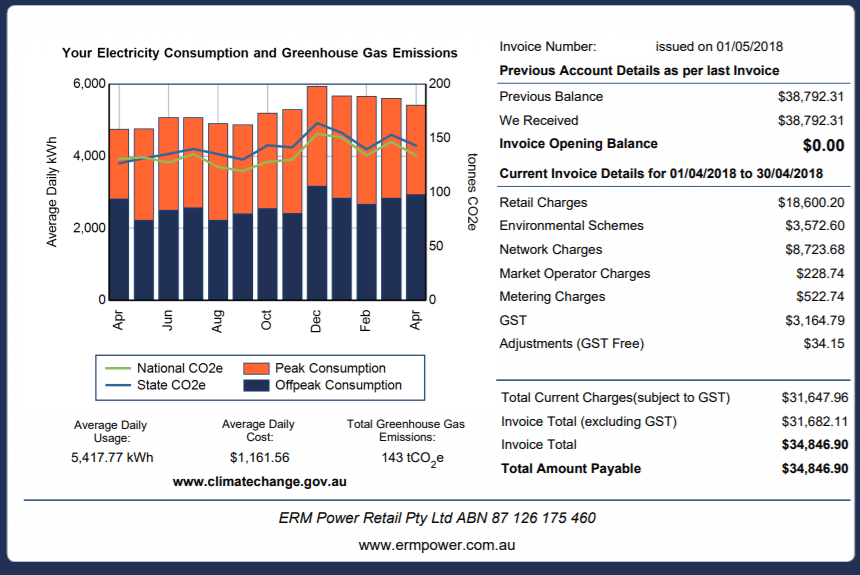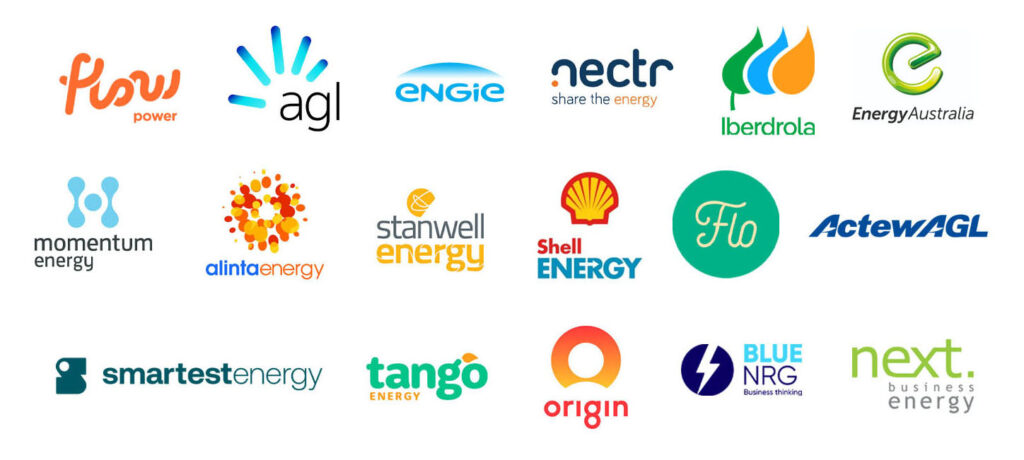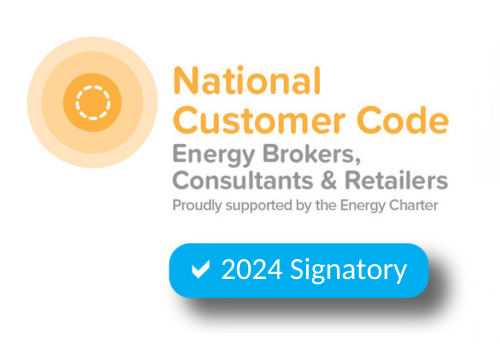Did you know that you might be eligible for savings depending on whether your business receives bundled or unbundled electricity bills? But how can you tell which type you’re getting? The key is to have a greater understanding of your energy bill.
The first thing to note is that if your company is categorized as a Small and Medium Enterprise (SME) or you’re what we sometimes refer to as a Small Market customer, then your invoice is bundled. Unbundled invoices are typically sent to businesses with higher energy consumption and which are charged Commercial & Industrial (C&I) rates. The government’s Energy Made Easy project can help you determine whether your business is an SME or a Large Market energy consumer.
Bundled invoices are generally simpler but can also mask additional charges and expenses that can actually be reduced or eliminated. These invoices also have an impact on flexibility.
Unbundled invoices also have drawbacks, including high exit penalties and less protection by law.
However, the plus side of unbundled invoices is that you can take a closer look at variables such as Direct Metering fees, network charges, market rates, and other factors that have an impact on your energy bill.
So you see, understanding your energy bill isn’t exactly a cut-and-dried situation. But Leading Edge Energy can show you how it works in practice so you can get a better idea of how to read your power bills.
Situation
One of our clients, the Telegraph Hotel, was able to cut down on its energy spend at a yearly rate of $14,000 after we helped them get reclassified into the Commercial & Industrial market, making them eligible to buy their energy at wholesale prices.
Before our intervention, the hotel purchased electricity based on the rate scheme for small-market energy consumers. Because they were seen as an SME, they had little choice in retailers, had limited insight into the energy contract market, and were paying more expensive energy rates than they really should have been.
How we fixed it
Leading Edge Energy analysed the Telegraph Hotel’s annual energy consumption and found that it placed them into the C&I rates category, close to the time that their retail contract was due to expire.
Our Energy Management Consultants monitor the wholesale market in real-time and analyse indicators including new capacity and oversupply, allowing us to know exactly when to go to the market to secure the best rates.
In the Telegraph Hotel’s case, we identified that wholesale prices were dropping significantly, so we purchased energy at the optimum time to lock in energy at cheaper rates. With Leading Edge Energy’s help, the hotel now has a secure supply of electricity, peace of mind, and the ability to budget and forecast.
Understanding your bundled energy bill for Small Market customers
Small Market customers – residential and, Leading Edge Energy’s target clientele, small to medium business energy-users, do not generally need to discern the minutiae of their bills and are therefore provided with a simplified, more protected and regulated retail energy market.
The Small Market is typically characterised by:
- Simpler billing structure (bundled billing);
- Simpler supply contracts with low exit fees;
- Less choice when it comes to retailers, network tariffs and metering;
- Greater pricing regulations;
- More protection by competition law;
- Representation from ombudsmen;

Bundled energy bills are typically sent to residential and SME customers.
In this type of power bill, rates are “bundled up” as simple Peak, Shoulder, Off-peak, Demand, and Services charges instead of the detailed itemisation of network charges, environmental fees, and the like which you might see on a C&I market bill. Because those charges are hidden or “bundled” into the rates, the final base rates end up being more expensive for small-market customers compared to what large-market customers may have to pay.
One additional thing to note is that because small-market electricity and gas fees are heavily regulated by the government, rates will only change once a year and discounts will vary according to the retailer.
Understanding your unbundled energy bill for Large Market customers
Large Market customers make intensive use of energy in their business operations and with large amounts of consumption, it’s natural that they would want the ability to scrutinise their billing statements more. The unbundled invoicing structure allows them to do that.
The large market or commercial and industrial billing system for energy involves:
- A complex billing structure also referred to as unbundled invoicing or billing
- Exacting and restrictive supply contracts with steep exit fees
- An abundance of options for energy retailers, network tariffs, and metering
- Minimal regulation of prices and fees
- Comparatively minimal protection by competition law
- No representation by the ombudsman’s offices

Unbundled C&I bills are also much more transparent than bundled ones and can be broken down into:
- Energy charges
- Network charges
- Metering charges
- Service charges
- Environmental charges
- Market charges
Because the final base rate does not include the above as a bundle, it ends up considerably cheaper than what is offered to residential or small-to-medium enterprise energy users.
The other charges remain split up, although these are still settled through the retailer who acts as a go-between from the customer to the generator. As soon as the customer has paid the bill, the retailer settles the outstanding charges.
Striking while the iron is hot
If you are classified into the C&I market, you’re basically assured that you can sign up for a more affordable wholesale energy contract compared to what’s available to SMEs for a period of 12, 24, 36 or 48 months. However, this comes with a caveat. Namely, if you break that contract by using more or less than the agreed-upon amount of electricity or gas required, you will be hit with a heavy penalty. So it’s vital to get the right advice about when to purchase to get rates that fit your consumption and budget.
Fortunately, this is where Leading Edge Energy can help because, as energy cost-reduction specialists, we have the expertise needed to know the right time to purchase energy.
Need help?
It might feel like energy bills and invoices are designed to confuse people. But don’t worry, Leading Edge Energy’s Energy Management Consultants are experts in helping business owners understand their power bills, secure better electricity and gas rates, and ensure that all charges are valid and correct.
Call us on 1300 852 770 or drop us an e-mail at hello@leadingedgeenergy.com.au today.
We source, analyse, compare and rank commercial, industrial and multisite energy quotes. Obligation Free.
Chat with one of our experienced consultants today and get the insights your business needs to help manage the risks associated with volatile electricity and natural gas markets. Our energy procurement service is obligation-free and provides a time-saving way of securing lower energy rates from our panel of energy retailers.







